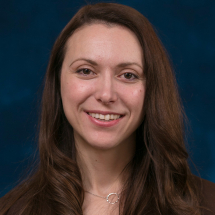It has long been known that giving can have positive effects on the person who is giving, such as an increase in happiness, confidence, and even physical health. But research from Indiana University has found there may be another potential implication of giving: physical attractiveness.
The IU study, published in Nonprofit and Voluntary Sector Quarterly, found that more attractive people are more likely to be givers, and givers are rated as more attractive.
“Poets and philosophers have suggested the link between moral and physical beauty for centuries,” said study co-author Sara Konrath, Ph.D., who is an associate professor of philanthropic studies at the Indiana University Lilly Family School of Philanthropy at IU Indianapolis on sabbatical this year at Notre Dame’s Institute for Advanced Study. “This study confirms that people who are perceived as more attractive are more likely to give and givers are seen as more attractive.”
Konrath and study co-author Femida Handy, Ph.D., of the University of Pennsylvania, used three large studies, one that examined older adults at a single time, and two that started in late adolescence and followed participants for years—one of these studies followed participants as late as older adulthood. Konrath and Handy asked two research questions: Are individuals who undertake more giving behaviors rated as more physically attractive? And the reverse, are more physically attractive people more likely to undertake giving behaviors?
Those rating physical attractiveness had no information on participants’ giving behaviors, allowing the researchers to determine if a person’s giving behaviors correlated with physical attractiveness, without the halo effect of raters being influenced by knowing participants’ giving behaviors.
When it comes to the older adults, volunteering and giving affection were related to higher attractiveness ratings. When it comes to young people, those who volunteered rated higher.
“Although we cannot fully explain why the link between giving behaviors and attractiveness exists, we find remarkable consistency across the three studies, despite being conducted at different times, using different participants, and using different methods and measures,” Handy said.
The paper is important, Konrath said, because it disproves the perception that beautiful people are self-focused and vain. Instead, the studies found that being rated as a little more attractive was associated with a little more generosity. Furthermore, Konrath noted that people spend significant amounts of money on beauty products and cosmetic surgery to improve their looks, yet it is possible that doing good could help to draw inner beauty to the surface.
“Our findings suggest that beauty products and procedures may not be the only way to enhance an individual’s attractiveness,” Konrath said. “Perhaps being generous could be the next beauty trend.”
IU Research
IU's world-class researchers have driven innovation and creative initiatives that matter for 200 years. From curing testicular cancer to collaborating with NASA to search for life on Mars, IU has earned its reputation as a world-class research institution. Supported by $854 million last year from our partners, IU researchers are building collaborations and uncovering new solutions that improve lives in Indiana and around the globe.
Indiana University Lilly Family School of Philanthropy
The Lilly Family School of Philanthropy at IU Indianapolis is dedicated to improving philanthropy to improve the world by training and empowering students and professionals to be innovators and leaders who create positive and lasting change. The school offers a comprehensive approach to philanthropy through its academic, research and international programs and through The Fund Raising School, Lake Institute on Faith & Giving, the Mays Family Institute on Diverse Philanthropy and the Women’s Philanthropy Institute. Follow us on Twitter, LinkedIn, or Instagram, and “Like” us on Facebook.


